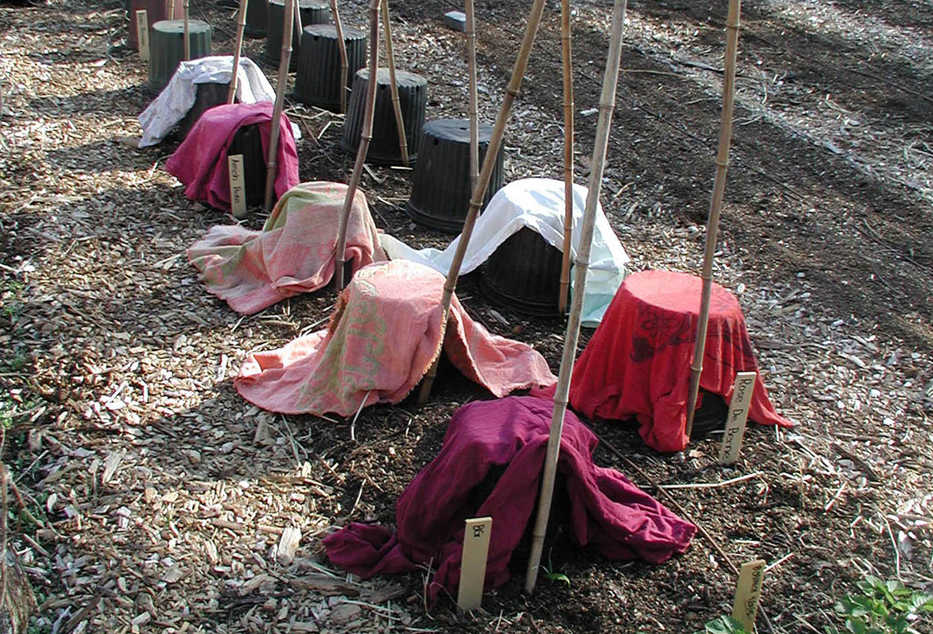Spring’s last frost — when the mercury takes its final plunge to freezing temperatures until autumn — is a seminal point in the gardening calendar. That 32-degree temperature will threaten tender young seedlings and fruit tree blossoms which, if frozen, will not be followed by fruit.
Unfortunately, we find out when that last frost is only after it has passed. Yet we can still plan our gardening around that date — by playing the averages.
Hence, I sow tomato seeds indoors six weeks before the “average date of the last killing frost,” as that date is termed, and then set out the transplants a week after that date.
WHEN IS THE LAST SPRING FROST?
To plan, you have to know the average date of the last killing frost in your garden. Don’t trust your gut to come up with this date or you’ll end up planting tomato seeds on a freak warm day in February.
You might find the average date by looking in a gardening magazine for one of those maps showing the country overrun with squiggly lines on which the date is printed. Or, you could find it by zip code at http://davesgarden.com/guides/freeze-frost-dates/index.php?q =.
Local weather records are another source of information if they extend back far enough. You could also keep such records yourself, or ask gardening neighbors.
The benefit of looking at years of records is offset, of course, by shifts in climate over the years.
GATHERING INFORMATION
Frost dates don’t respect political or geographical boundaries but trace their squiggliness to differences in latitude and elevation, and proximity to large bodies of water. All else being equal, that date is pushed back four days for every 70 miles north you travel or 400 feet you climb. Large bodies of water will moderate temperature changes, having the same effect in spring as moving your garden north or higher up. (In autumn, the effect is opposite, the water delaying cooling.)
Those frost maps in gardening magazines or books paint the country in broad strokes, so you may want to home in more precisely on your own garden. Mine, in a low-lying area, is typically about 5 degrees colder than surrounding areas even a couple of miles away or a few hundred feet uphill, pushing the average frost date later.
Most important, once you get that average last-frost date, remind yourself that it’s nothing more than an average. One year, the actual last-frost date might arrive a week before the average date, while the next year it might arrive a week after.
Frosts that are late are the ones that find us gardeners scurrying around putting overturned flowerpots and blankets over tomato and pepper plants.
32 DEGREES IS NOT A MAGIC NUMBER
Also keep in mind that the critical 32-degree temperature isn’t the death knell for all plants, nor does it settle uniformly over your whole yard.
Many vegetables and annual flowers, such as broccoli, cabbage, calendula and snapdragon, come through temperatures even down into the 20s unscathed, as long as they have been acclimated to such cold.
And you’ll find the mercury staying a little higher near the radiant warmth of your house or the stones of a patio or path, beneath the protective canopy of tree branches, or even near a small pond or stream.
So just when is the last date of the average killing frost? It’s probably later than you imagine.

